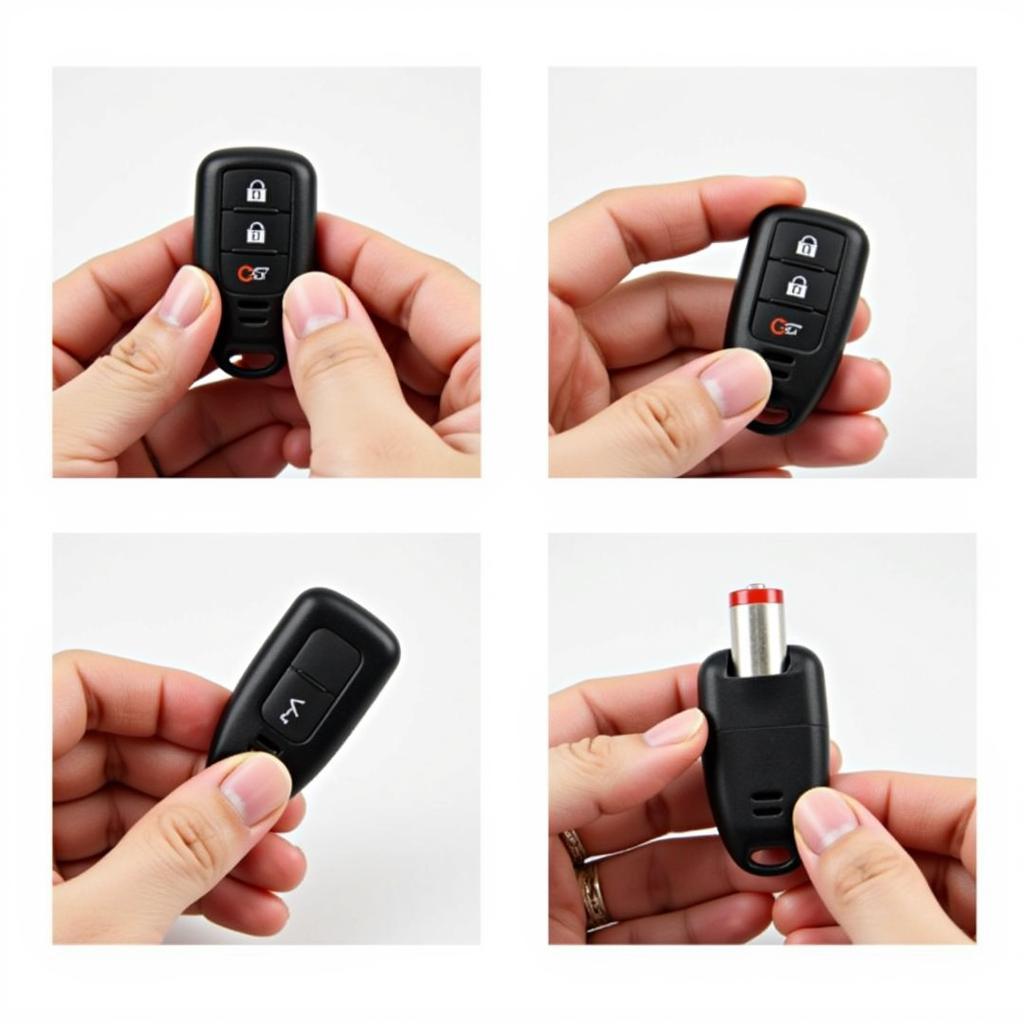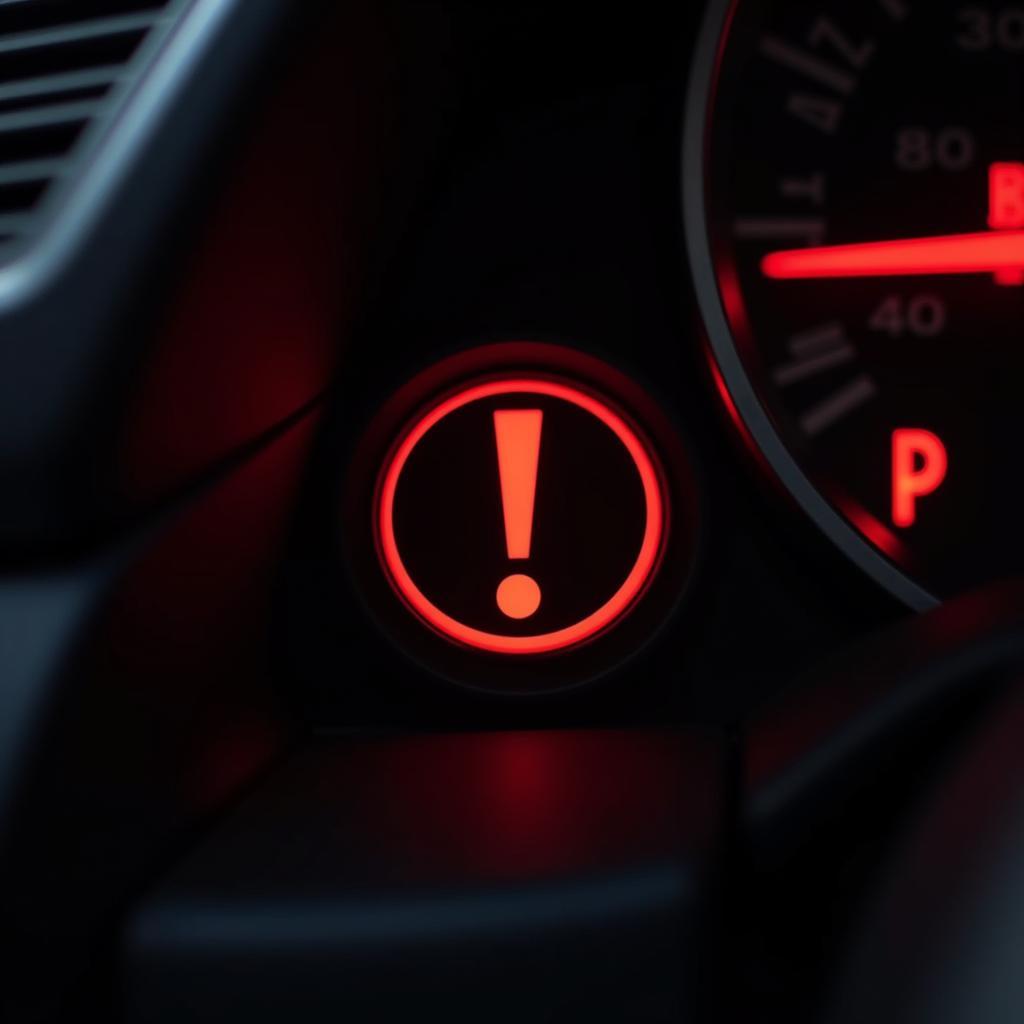The Buick brake warning light can illuminate for various reasons, ranging from low brake fluid to serious issues like a malfunctioning ABS system. Understanding these “buick brake warning light meanings p” is crucial for maintaining your vehicle’s safety and performance. This article will delve into the common causes, diagnostic procedures, and solutions for Buick brake warning light issues. After reading the first few paragraphs, you’ll find a link to a relevant resource about anti-lock brake warning lights.
The brake system is arguably the most critical safety feature in your Buick. Ignoring a warning light can lead to costly repairs, compromised safety, and potentially dangerous driving situations. Whether you’re experiencing a flashing light, a constant glow, or intermittent illumination, understanding the specific meaning behind the warning is the first step towards rectifying the problem. This comprehensive guide will empower you with the knowledge to diagnose and address Buick brake warning light concerns effectively. anti lock brake warning indicator light
Common Buick Brake Warning Light Meanings
The brake warning light in your Buick isn’t a one-size-fits-all indicator. It can signify several different problems.
Low Brake Fluid
One of the most common reasons for the brake warning light to illuminate is low brake fluid. This often indicates a leak in the brake system, which requires immediate attention.
Parking Brake Engaged
Sometimes, the simplest explanation is the correct one. If your parking brake is engaged, the warning light will likely stay on.
ABS System Malfunction
A malfunctioning Anti-lock Brake System (ABS) can trigger the brake warning light. This issue can be diagnosed through a diagnostic scan tool, which can pinpoint the specific problem within the ABS module.
Brake Pad Wear
Worn brake pads can also activate the warning light. Many modern Buicks have sensors that detect when the brake pads are nearing the end of their lifespan.
Diagnosing Buick Brake Warning Light Problems
Diagnosing the root cause of a brake warning light requires a systematic approach.
Visual Inspection
Start with a visual inspection of the brake system. Check the brake fluid level in the master cylinder. Look for any signs of leaks around the brake lines, calipers, and wheel cylinders.
Diagnostic Scan Tool
A diagnostic scan tool can read the error codes stored in your Buick’s computer. These codes can provide valuable insights into the specific problem within the brake system, such as a faulty ABS sensor or a low brake fluid level sensor malfunction.
Professional Diagnosis
If you’re unsure about the diagnosis or lack the necessary tools, it’s always best to consult a qualified Buick technician. They have the expertise and equipment to accurately diagnose and repair any brake system issues.
Troubleshooting Buick Brake Warning Light Issues
Once you’ve diagnosed the problem, the next step is to implement the appropriate solution.
Adding Brake Fluid
If the brake fluid is low, carefully add the correct type of brake fluid to the master cylinder. Remember, low brake fluid often indicates a leak, so addressing the underlying leak is essential.
Checking the Parking Brake
Ensure the parking brake is fully disengaged. Sometimes, a slightly engaged parking brake can trigger the warning light.
Addressing ABS Issues
ABS problems often require professional repair. Depending on the specific fault code, the repair might involve replacing a faulty sensor, repairing wiring, or even replacing the entire ABS module.
Replacing Brake Pads
If the brake pads are worn, they need to be replaced. It’s generally recommended to replace the brake pads on both sides of the axle simultaneously to maintain even braking performance.
Buick Brake Warning Light: Frequently Asked Questions
Here are some frequently asked questions regarding Buick brake warning lights:
-
What does a flashing brake warning light mean? A flashing brake light typically indicates a serious issue with the ABS system.
-
Can I drive with the brake warning light on? It’s strongly discouraged. Driving with a brake warning light can be dangerous.
-
How much does it cost to fix a Buick brake warning light issue? The cost depends on the underlying problem and can range from a simple fluid top-up to a more expensive ABS module replacement.
-
How often should I check my brake fluid level? Checking your brake fluid level at least once a month is a good practice.
-
What type of brake fluid should I use in my Buick? Consult your owner’s manual for the recommended brake fluid type. Using the incorrect type of brake fluid can damage the brake system.
-
Can I reset the brake warning light myself? While you might be able to temporarily reset the light, it will likely return if the underlying problem isn’t addressed.
-
What are the symptoms of a bad ABS sensor? Symptoms can include a pulsating brake pedal, extended stopping distances, and an illuminated ABS warning light.
Conclusion
Understanding “buick brake warning light meanings p” is paramount for safe and reliable driving. By following the diagnostic and troubleshooting tips outlined in this guide, you can effectively address brake warning light concerns in your Buick. However, for complex issues, always seek the assistance of a qualified Buick technician. Remember, neglecting brake system warnings can lead to serious safety hazards and expensive repairs. If you’re dealing with specific brake warning light issues on a 2014 Buick SRX, you might find this article helpful: does 2014 srx have brake warning indicator light. Furthermore, you can find useful information about brake lights on other vehicle models, such as the Chevy HHR: chevy hhr brake indicator warning lights. Addressing brake issues promptly is crucial for ensuring your safety and the longevity of your vehicle.


